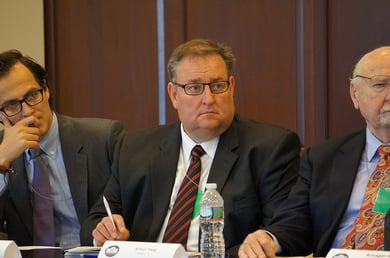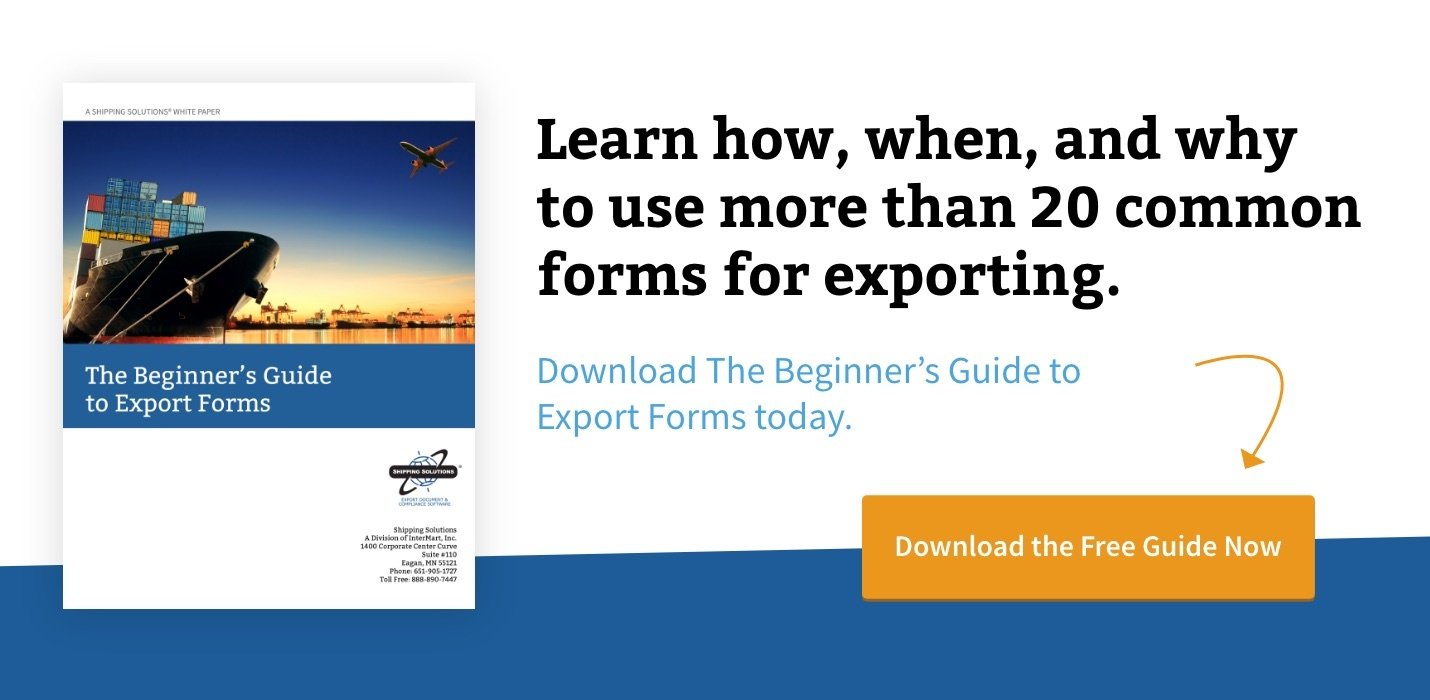The International Trade Blog Export Forms
Promoting Export and Job Growth through the Trans-Pacific Partnership (TPP)
On: July 29, 2015 | By:  David Noah |
5 min. read
David Noah |
5 min. read
 Who knew that getting onto the grounds of the White House would be infinitely easier than getting from Minneapolis to Washington, D.C.?
Who knew that getting onto the grounds of the White House would be infinitely easier than getting from Minneapolis to Washington, D.C.?
But after sitting on the tarmac for seven hours—first for engine repairs and then for weather, watching a mini-revolt by airline flight attendants, and waiting for a replacement pilot and co-pilot to arrive, I was pleasantly surprised by how relatively fast and easy it was to get through White House security so I could attend a White House Business Council briefing on international trade.
As I wandered the marble hallways of the historic old Eisenhower Executive Office building looking for room 350, I passed military officers in their fancy uniforms and well-dressed men and women in business attire looking important as they went about the nation’s business.
I was one of about 40 small business owners gathered to hear more about President Obama’s international trade agenda, get an update on the status of important trade legislation in Congress, and ask questions of a number of Administration officials including Secretary of Commerce Penny Pritzker, U.S. Trade Representative Michael Froman, and others.
While free trade agreements (FTAs) aren’t universally popular among U.S. voters, they play an important role in helping small- and medium-sized companies get started in and grow their exports. Nearly 98% of U.S. exporters—more than 300,000 companies—are small- and mid-sized businesses. Unlike the largest corporations, these businesses don’t have the resources to fight trade barriers on their own and therefore benefit when the U.S. government is on their side.
Barriers to Trade
The biggest barrier to trade is the duty companies must pay to import goods into a country. Without free trade agreements, U.S. companies of all sizes typically pay much higher tariff rates when exporting goods to other countries than when those countries export their goods to the U.S. That makes U.S. goods more expensive and less competitive in foreign markets.
Foreign companies don’t face the same challenge when exporting to the U.S. Seventy percent of goods entering the United States come in duty free; the average tariff rate is only 1.4%.
The Trans-Pacific Partnership levels that playing field so U.S. companies can compete on price in the Asia-Pacific countries participating in the negotiations. And when U.S. goods can compete on price, they win on so many other levels.
The Administration’s commitment to help small businesses can also be found in the TPP agreement now being negotiated. For the first time, this agreement includes a chapter that specifically identifies and addresses issues that too often prevent small businesses from entering foreign markets. These barriers include intellectual property protection and administrative and bureaucratic delays that make exporting difficult.
You’ll learn more about these non-tariff trade barriers in my previous blog post, 18 Non-Tariff Trade Barriers Exporters Need to Know. And check out the blog post from Dr. Prema Nakra, Beware of Non-Tariff Barriers in Global Markets.
The Growing Global Market
Exporting plays an important role in the entire U.S. economy. One-third of the U.S. jobs that have been created during the recent economic recovery can be directly tied to exports. Companies that export typically grow faster than companies that do not, and their workers make a higher average salary than employees of companies that don’t export.
Those statistics make sense since 95% of the world’s consumers are located outside the United States. And that ties directly to the importance of the Trans-Pacific Partnership since the size of the middle class in the Asia-Pacific region is expected to grow from about 500 million people to 3.1 billion during the next 15 years.
New exporters to this region will want to check out Export Basics: 7 Tips for New Exporters.
Setting the Rules of Globalization
Despite these numbers, there are those who view globalization as something negative and believe the U.S. should do everything it can to fight it, not embrace it. Frankly, we’re way past the point of the discussion of whether or not globalization is a good thing. Globalization is already happening. Instead, we are at the point of determining who will set the rules of globalization and what those rules will be.
While other countries like China are primarily interested only in access to new markets, the U.S. negotiators are working to build trade agreements that not only help small businesses, but also protect worker rights and the environment.
Specifically, it’s the stated objective of U.S. negotiators to make sure the TPP includes enforceable rules that protect the right of workers to engage in collective bargaining and prohibit trade in goods produced by forced labor including forced child labor. In regards to the environment, the U.S. is pushing for strong and enforceable environmental obligations among treaty participants. (You’ll find a complete summary of U.S. objectives for the TPP at the U.S. Trade Representative website.)
Beyond the TPP
In addition to negotiating the Trans-Pacific Partnership, the Obama Administration is negotiating the Transatlantic Trade and Investment Partnership (T-TIP) with the members of the European Union. An important objective of this negotiation is the harmonization of regulatory standards between the U.S. and the EU, so business will only have to go through costly and time-intensive testing procedures once for both markets.
More pressing than both the TPP and the T-TIP negotiations is Congressional reauthorization of the Export-Import (Ex-Im) Bank of the United States. The Ex-Im Bank plays an important role in helping finance exports for companies of all sizes. Last year, it provided financing or guarantees for more than 3,300 exporting business.
Sixty countries around the world have an Export-Import Bank of their own helping businesses in their countries finance and grow their exports. The U.S. put itself at a disadvantage when it let it’s own bank expire on July 1. Hopefully Congress will see the light at some point and reauthorize the bank.
You’ll find a great summary of the kind of financing services the Ex-Im Bank provided before its charter expired in a series of articles written by Curt Hanson for this blog: The Essentials of Export Financing: International Finance Options.
It was an exciting day to be in Washington, D.C. Not only was I able to participate in the White House briefing, I was there while Congress passed the important Trade Promotion Authority legislation. But as I hope you will agree, there is still a lot of important work that needs to be done.

About the Author: David Noah
David Noah is the founder and president of Shipping Solutions, the #1 selling export documentation software that develops and sells export documentation and compliance software targeted at U.S. companies that export. David is a frequent speaker on export documentation and compliance issues and has published several articles on the topic.


